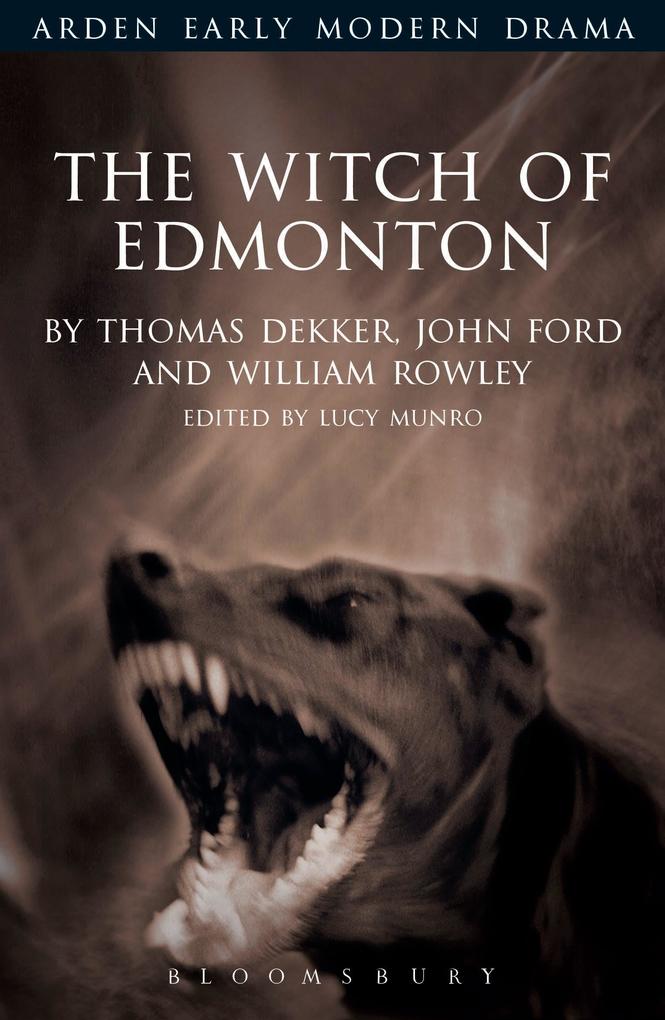
Zustellung: Fr, 20.12. - Sa, 28.12.
Versand in 3-4 Wochen
VersandkostenfreiBestellen & in Filiale abholen:
On 19 April 1621, a woman named Elizabeth Sawyer was hanged at Tyburn. Her story was on the bookstalls within days and within weeks was adapted for the stage as The Witch of Edmonton. The devil stalks Edmonton in the shape of a large black dog and, just as Elizabeth Sawyer makes her demonic pact, the newlywed Frank Thorney enters into his own dark bargain in the shape of a second, bigamous marriage. Torn between sympathy for Sawyer and Thorney and a clear-eyed assessment of their crimes, the play was the finest and most nuanced treatment of witchcraft that the stage would see for centuries. Lucy Munro's introduction provides students and scholars with a detailed understanding of this complex play.
Inhaltsverzeichnis
List of illustrations
General editors' preface
Preface
Introduction
Prince Charles's Men, 1618-22
Collaborations
Reading Elizabeth Sawyer in 1621
Witchcraft and Bigamy: 1621 and 1658
Danger and Death: Tragicomedy and Domestic Drama in 1621
Curtain and Cockpit: Staging the Supernatural in 1621
London and Lancashire: Staging Witchcraft in 1634
The Witch and the Dog
Staging The Witch of Edmonton: 1921 to 2014
Edmonton on Stage
The Witch and the Dog: Reprise
Forget the Hobby Horse!
Printing The Witch of Edmonton: 1658 and 2014
Quarto Paratext
THE WITCH OF EDMONTON
Appendix: Doubling chart
Abbreviations and References
Abbreviations used in notes
Works by and partly by Shakespeare
Editions of The Witch of Edmonton collated
Other works cited
Modern productions cited
General editors' preface
Preface
Introduction
Prince Charles's Men, 1618-22
Collaborations
Reading Elizabeth Sawyer in 1621
Witchcraft and Bigamy: 1621 and 1658
Danger and Death: Tragicomedy and Domestic Drama in 1621
Curtain and Cockpit: Staging the Supernatural in 1621
London and Lancashire: Staging Witchcraft in 1634
The Witch and the Dog
Staging The Witch of Edmonton: 1921 to 2014
Edmonton on Stage
The Witch and the Dog: Reprise
Forget the Hobby Horse!
Printing The Witch of Edmonton: 1658 and 2014
Quarto Paratext
THE WITCH OF EDMONTON
Appendix: Doubling chart
Abbreviations and References
Abbreviations used in notes
Works by and partly by Shakespeare
Editions of The Witch of Edmonton collated
Other works cited
Modern productions cited
Mehr aus dieser Reihe
Produktdetails
Erscheinungsdatum
06. Dezember 2016
Sprache
englisch
Seitenanzahl
320
Reihe
Arden Early Modern Drama
Autor/Autorin
Thomas Dekker, John Ford, William Rowley
Herausgegeben von
Lucy Munro, Gordon Mcmullan, John Jowett, Suzanne Gossett
Verlag/Hersteller
Produktart
kartoniert
Abbildungen
21 bw illus
Gewicht
351 g
Größe (L/B/H)
200/134/19 mm
ISBN
9781904271529
Entdecken Sie mehr
Bewertungen
0 Bewertungen
Es wurden noch keine Bewertungen abgegeben. Schreiben Sie die erste Bewertung zu "The Witch of Edmonton" und helfen Sie damit anderen bei der Kaufentscheidung.














